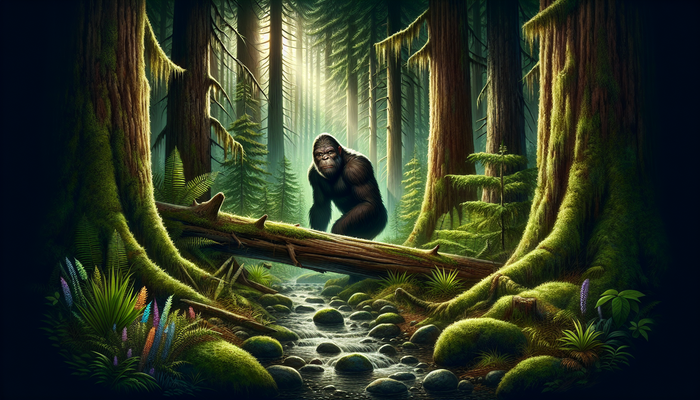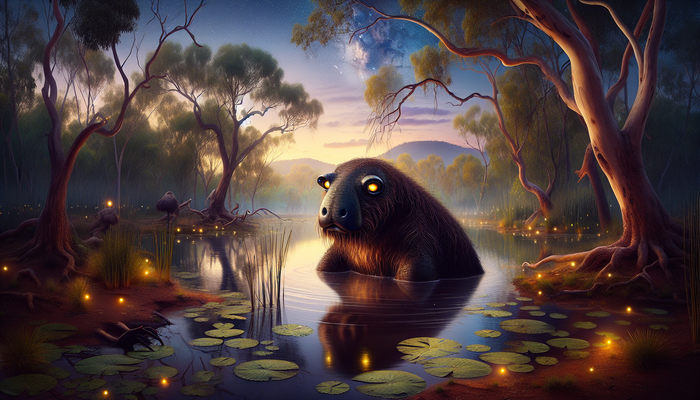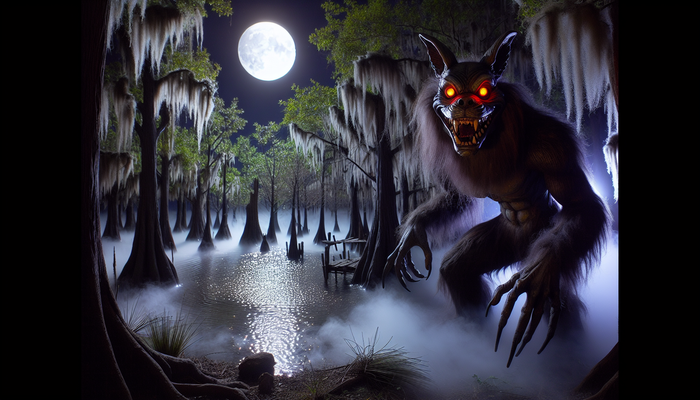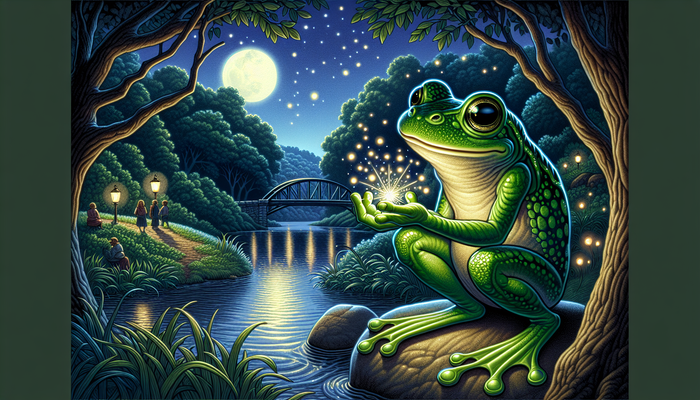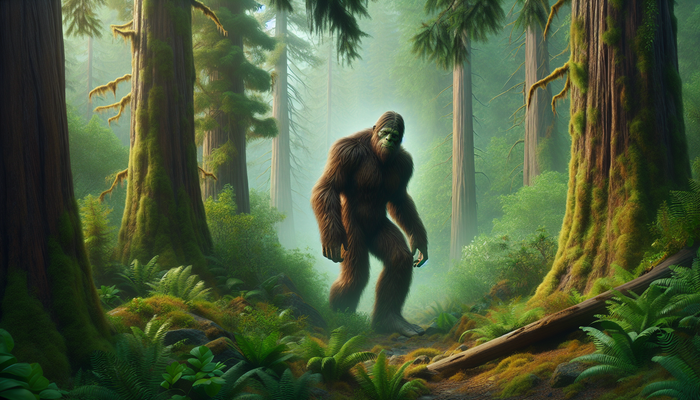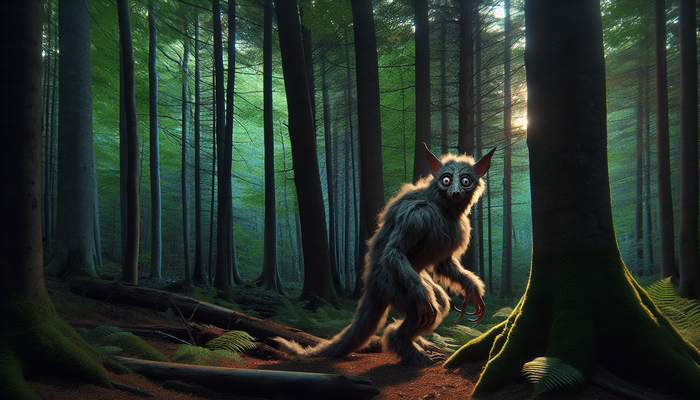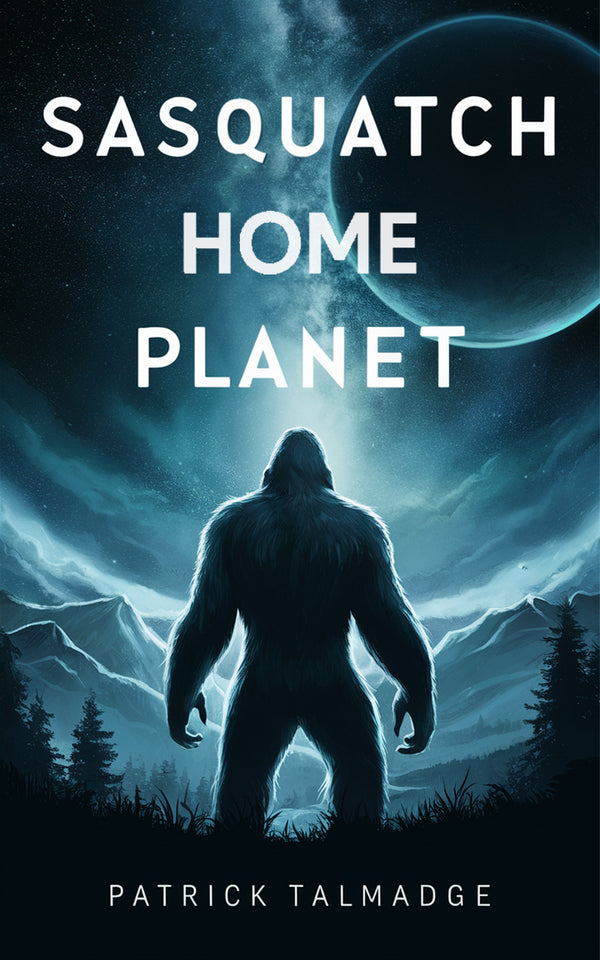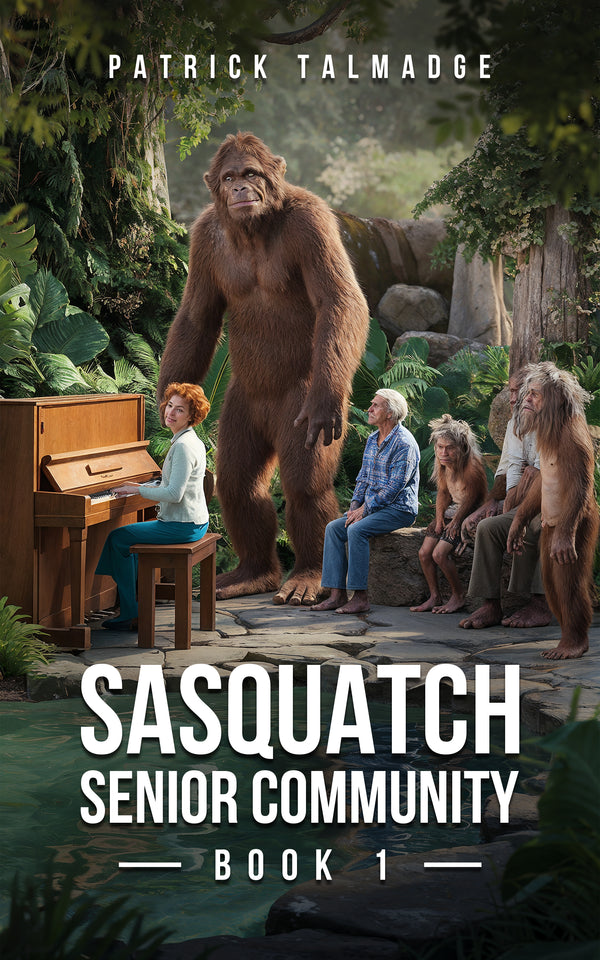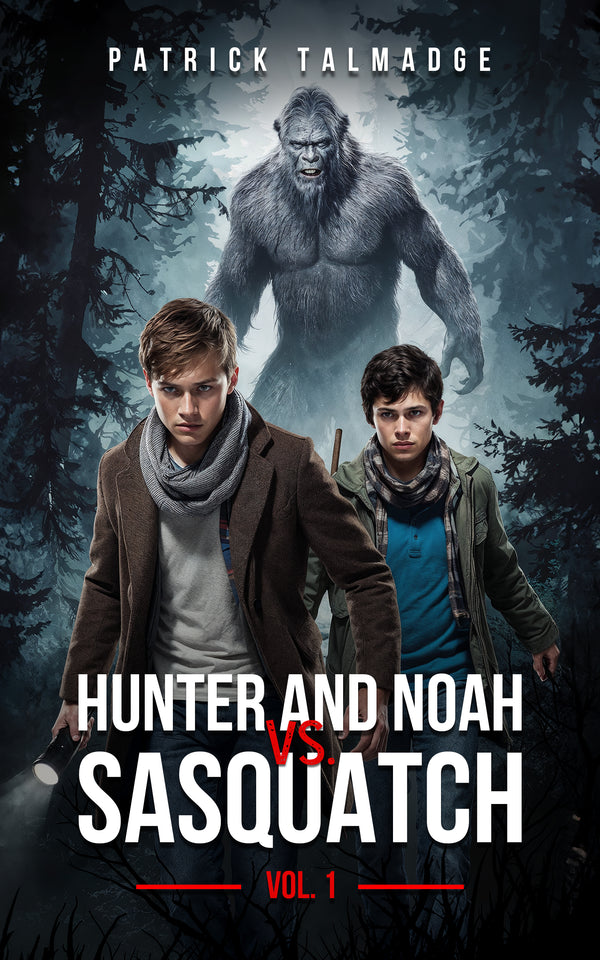Discovering the Sharlie Lake Monster: Idaho's Legendary Creature
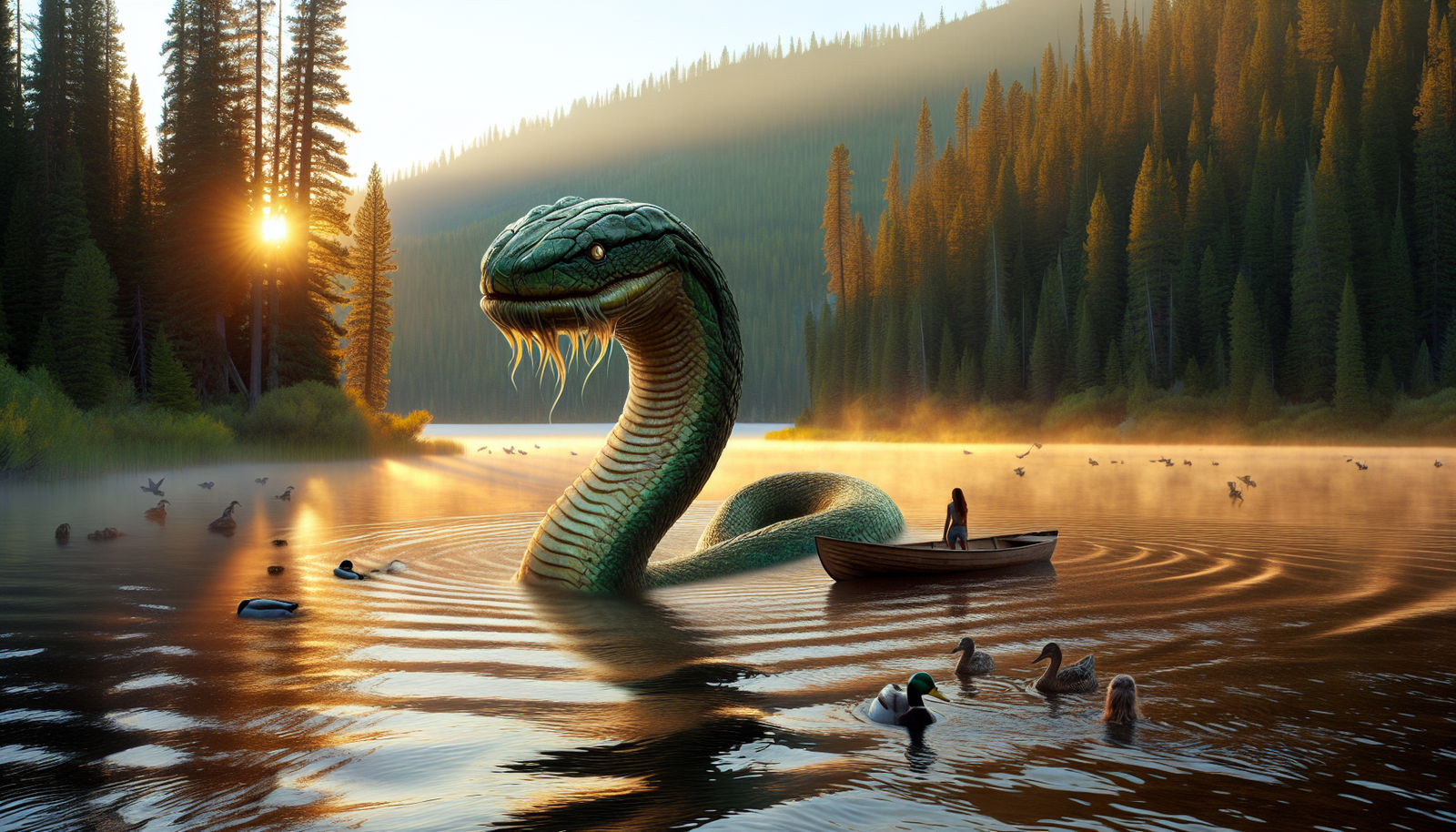
By Anthony Romano, Cryptozoologist
The Origins of the Sharlie Legend
Long before the first Western settlers laid eyes on the shimmering expanse of Payette Lake, the Native American tribes of the region spoke in hushed tones about the waters. Their stories, passed down through generations, told of an evil spirit that dwelled in the lake's depths. These tales served as both a warning and a reminder of the respect due to the natural world and its hidden forces.
The Shoshone and Bannock tribes, in particular, held the lake in a mixture of awe and fear. Their oral traditions described the lake as having unfathomable depths, a place where the unwary might be pulled down into darkness never to return. These stories laid the groundwork for the modern legend of Sharlie, creating a sense of mystery and danger that would persist long after the tribes had moved on.
It wasn't until 1920 that the first documented sighting of what would come to be known as Sharlie occurred. A group of railroad workers, tasked with cutting ties near the upper end of the lake, reported a strange sight. What they initially mistook for a floating log suddenly began to move of its own accord. The "log" undulated through the water, creating a wake as it sped away from the astonished onlookers.
This incident marked the beginning of Sharlie's modern legend. The workers' tale spread quickly through the small community of McCall, igniting curiosity and speculation. What could have caused such a strange occurrence? Was it merely a trick of the light, or had they glimpsed something truly extraordinary?
The 1944 Sightings: A Turning Point
While the 1920 sighting piqued local interest, it was a series of encounters in the summer of 1944 that thrust Sharlie into the national spotlight. In August of that year, multiple groups of people reported seeing a creature in Payette Lake that defied explanation.
The descriptions were remarkably consistent. Witnesses spoke of a beast 30 to 35 feet in length, with a head reminiscent of a dinosaur and jaws that seemed capable of snapping a boat in two. Perhaps most striking were the accounts of the creature's body, which was said to have humps like a camel and skin that appeared almost shell-like in texture.
One particularly detailed account came from a group near an area of the lake known as the Narrows. They described the creature as "at least 35 feet long, with a dinosaur-type head, pronounced jaw, humps like a camel, and shell-like skin." The specificity of these descriptions lent an air of credibility to the sightings that was hard to dismiss.
The national media soon caught wind of the story. Time magazine ran an article about the creature, dubbing it "Slimy Slim" and reporting that no fewer than 30 people had seen its "periscope-shaped head" since July 2nd of that year. The piece captured the imagination of readers across the country, turning a local legend into a national sensation.
As news of the sightings spread, curious onlookers and would-be monster hunters began to flock to McCall. The tiny resort town found itself at the center of a media frenzy, with visitors hoping to catch a glimpse of the elusive creature or perhaps even capture proof of its existence.
The influx of tourists brought both excitement and skepticism to the community. While some embraced the attention and the boost to the local economy, others worried about the impact on the lake's ecosystem and the town's quiet way of life. Regardless of individual opinions, there was no denying that Sharlie had put McCall on the map.
Naming Sharlie: A Contest for the Ages
As sightings continued through the 1940s and early 1950s, the creature became an increasingly important part of local culture. However, many felt that "Slimy Slim" lacked the dignity befitting such a legendary being. In 1954, A. Boone McCallum, the editor of the local newspaper The Star News, decided it was time for a change.
McCallum launched a nationwide contest to rename the lake monster. The response was overwhelming, with over 200 entries pouring in from across the country. Suggestions ranged from the scientific-sounding to the whimsical, including names like "Boon," "Fantasy," "Nobby Dick," and "Humpy."
In the end, the winning entry came from an unexpected source. Le Isle Hennefer Tury of Springfield, Virginia, suggested the name "Sharlie." Her inspiration? A popular catchphrase from Jack Pearl's radio show: "Vas you der, Sharlie?" The playful reference struck a chord with the judges, and Sharlie was officially christened.
The naming contest did more than just give the creature a new moniker—it cemented Sharlie's place in the hearts of McCall's residents. By involving the community in the naming process, McCallum had transformed Sharlie from a fearsome monster into a beloved local character. The new name carried a hint of friendliness and approachability that "Slimy Slim" had lacked, making it easier for people to embrace the legend.
Sightings Through the Decades
Following the excitement of the 1944 sightings and the 1954 naming contest, reports of Sharlie continued to surface regularly. Each new sighting added to the creature's mystique, often providing tantalizing new details that fueled speculation about its nature and origins.
Notable Sightings
- 1956: Dabney Taylor reported a close encounter with Sharlie while out on the lake. He described a creature with a long neck topped by a small head adorned with two horn-like protrusions.
- 1961: Jayne Brown claimed to have seen Sharlie twice in a single day while fishing. She described a dark green body covered in black spots, with a long tail ending in a fin.
- 1971: Mary Jane Williams and her companions reported seeing a creature with a grayish-brown body covered in scales and bumps, sporting a long neck and a small head with two eyes.
- 1985: Tom Grote claimed to have spotted Sharlie from the air, observing a creature with three distinct humps on its back, estimating its length at around 40 feet.
- 1996: Kate Wolf reported seeing Sharlie from a pontoon boat, noting humps on the creature's back that resembled the peaks of a dinosaur's spine.
These varied accounts, spanning several decades, have helped to build a composite image of Sharlie in the public imagination. While details often differ, certain elements remain consistent: a large, serpentine body, multiple humps or protrusions along its back, and a head that is small in proportion to its body. The diversity of descriptions has led some to suggest that there might be more than one creature inhabiting the lake, or that Sharlie might be able to change its appearance.
Theories Surrounding Sharlie's Existence
The persistent sightings of Sharlie have given rise to a variety of theories attempting to explain the creature's nature and origin. These range from the plausible to the fantastical, each offering a unique perspective on the Payette Lake mystery.
The Giant Sturgeon Theory
One of the more grounded theories suggests that Sharlie might be a giant sturgeon. Sturgeons are known to inhabit the waters of the Snake River, which is connected to Payette Lake via the Payette River. These prehistoric-looking fish can grow to impressive sizes, with some species reaching lengths of over 20 feet. Proponents of this theory argue that a sturgeon could have made its way into Payette Lake before the construction of dams on the Snake River in the 1970s, explaining the creature's apparent long-term presence in the lake.
The Prehistoric Survivor Theory
A more sensational theory posits that Sharlie could be a surviving member of a prehistoric species, similar to the plesiosaur often associated with the Loch Ness Monster. This idea taps into the human fascination with the possibility of "living fossils" – creatures thought to be extinct that have somehow survived into the modern era.
Skeptical Explanations
Skeptics often argue that Sharlie sightings can be attributed to misidentifications of known animals or natural phenomena. Large fish, otters, or even floating logs could potentially be mistaken for a monster, especially in low light conditions or at a distance. Some researchers have proposed that unusual wave patterns on the lake's surface, such as a seiche (a standing wave in an enclosed body of water), could be responsible for some Sharlie sightings.
Fringe Theories
More unconventional theories have emerged in recent years, including:
- The idea that Sharlie might exist in a parallel dimension, only occasionally crossing over into our reality.
- Speculation that Sharlie could be a government experiment gone awry, perhaps an attempt to create a biological weapon that escaped into Payette Lake.
Despite the variety of theories, the scientific consensus remains skeptical of Sharlie's existence. Extensive studies of Payette Lake have failed to turn up any concrete evidence of a large, unknown creature inhabiting its waters. The lack of physical evidence – no clear photographs, no remains, no DNA samples – continues to be the biggest challenge for those who believe in Sharlie's existence.
Cultural Impact and Community Engagement
Regardless of the debates surrounding its existence, Sharlie has undeniably become an integral part of McCall's identity and a significant draw for tourism. The creature's influence can be seen throughout the town, from souvenir shops to local events, cementing its status as a beloved cultural icon.
Sharlie in Local Commerce
- Souvenir shops offer a wide range of Sharlie-themed merchandise, including t-shirts, mugs, stuffed animals, and keychains.
- Local restaurants feature "Sharlie Burgers" and other themed menu items.
- Boat tour operators incorporate tales of Sharlie into their lake excursions.
Community Events and Art
The annual McCall Winter Carnival often features Sharlie prominently, with ice sculptors creating larger-than-life representations of the creature. These sculptures not only showcase local artistic talent but also reinforce Sharlie's place in the community's shared mythology.
Literary and Media Influence
Sharlie has inspired various creative works, including:
- Children's books featuring the creature
- "Sharlie," a non-fiction book by Boisean Lynda Johnson, published in 2007
- Numerous articles, television programs, and documentaries about lake monsters and cryptozoology
Community Identity
The legend of Sharlie serves as a point of connection for the community of McCall. Whether residents believe in the creature's existence or not, the shared stories and experiences surrounding Sharlie create a common cultural touchstone. The legend provides a unique identity for the town, distinguishing it from other mountain resort communities and giving both locals and visitors something to rally around.
Recent Developments and Sightings
While the heyday of Sharlie sightings may have passed, interest in the creature has never fully waned. In recent years, new technologies and changing attitudes towards cryptozoology have brought fresh attention to the legend of Payette Lake's resident monster.
2023 Video Sighting
In 2023, a video surfaced that purported to show something unusual moving beneath the surface of Payette Lake. The footage, captured by tourists on a boat, shows a disturbance in the water accompanied by a series of bubbles rising to the surface. This incident sparked renewed debate about Sharlie's existence and highlighted the role that social media and digital technology now play in cryptozoology.
Official Stance and Conservation Efforts
The Idaho Department of Fish and Game maintains a pragmatic approach to the Sharlie phenomenon:
- They acknowledge no scientific evidence supporting Sharlie's existence
- They express commitment to protecting the lake's ecosystem
- They investigate unusual sightings or disturbances reported by the public
Proposed Research
Some researchers have proposed using advanced sonar technology to conduct a comprehensive survey of Payette Lake, similar to projects undertaken at Loch Ness. However, funding and logistical challenges have so far prevented such a project from moving forward.
Tourism and Conservation
The ongoing mystery surrounding Sharlie continues to draw visitors to McCall and Payette Lake. Local tour operators offer "Sharlie-watching" boat trips, combining scenic views with tales of the creature's history. Some environmental groups have begun using the Sharlie legend as a tool for conservation education, linking the health of the lake's ecosystem to the potential habitat of a mysterious creature.
Conclusion
The legend of Sharlie, like all good mysteries, invites us to question what we know and to imagine what might be possible. It reminds us that the world is still full of surprises and that there is value in maintaining a sense of wonder about the unknown. Whether Sharlie is a misidentified natural phenomenon, a product of collective imagination, or something truly extraordinary, its legend continues to captivate and inspire.
As long as Payette Lake's waters remain deep and mysterious, there will be those who scan its surface, hoping for a glimpse of something extraordinary. And in that hope, in that willingness to believe in the fantastic, we find a reflection of our own enduring fascination with the mysteries of the natural world.
The story of Sharlie is more than just a tale of a possible lake monster. It is a testament to the power of folklore, the allure of the unknown, and the human capacity for wonder. As we continue to explore and understand our world, legends like Sharlie remind us that there is always more to discover, always another mystery waiting to be unraveled. In the end, perhaps it is not the reality of Sharlie that matters most, but the way its legend enriches our lives and connects us to the wild, untamed corners of our world.
From Bigfoot to UFOs: Hangar 1 Publishing Has You Covered!
Explore Untold Stories: Venture into the world of UFOs, cryptids, Bigfoot, and beyond. Every story is a journey into the extraordinary.
Immersive Book Technology: Experience real videos, sights, and sounds within our books. Its not just reading; its an adventure.


